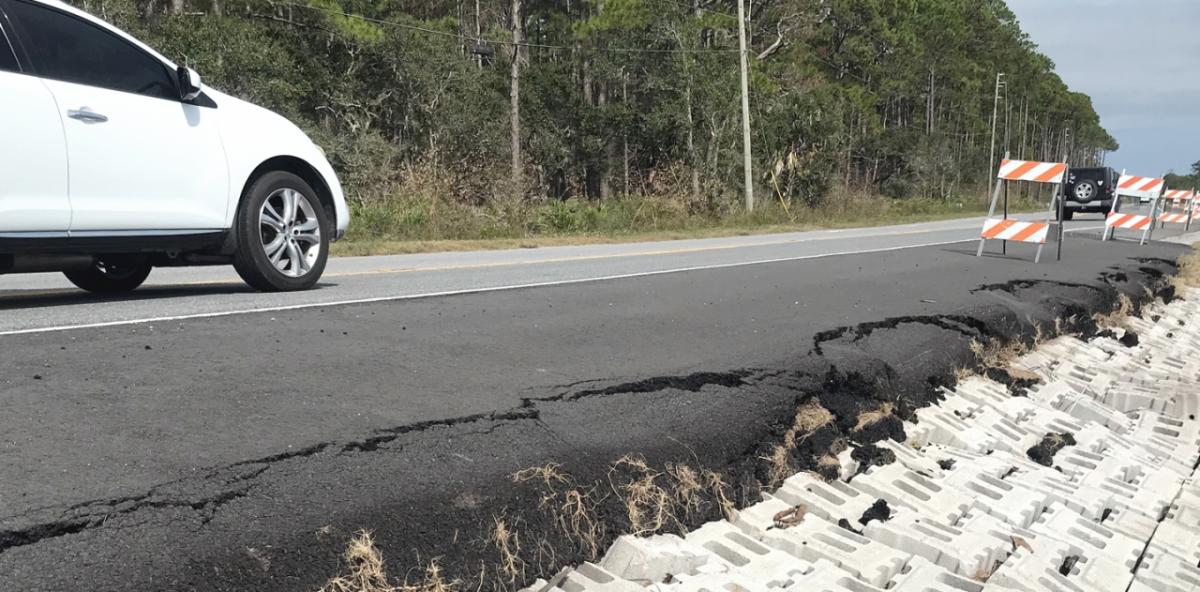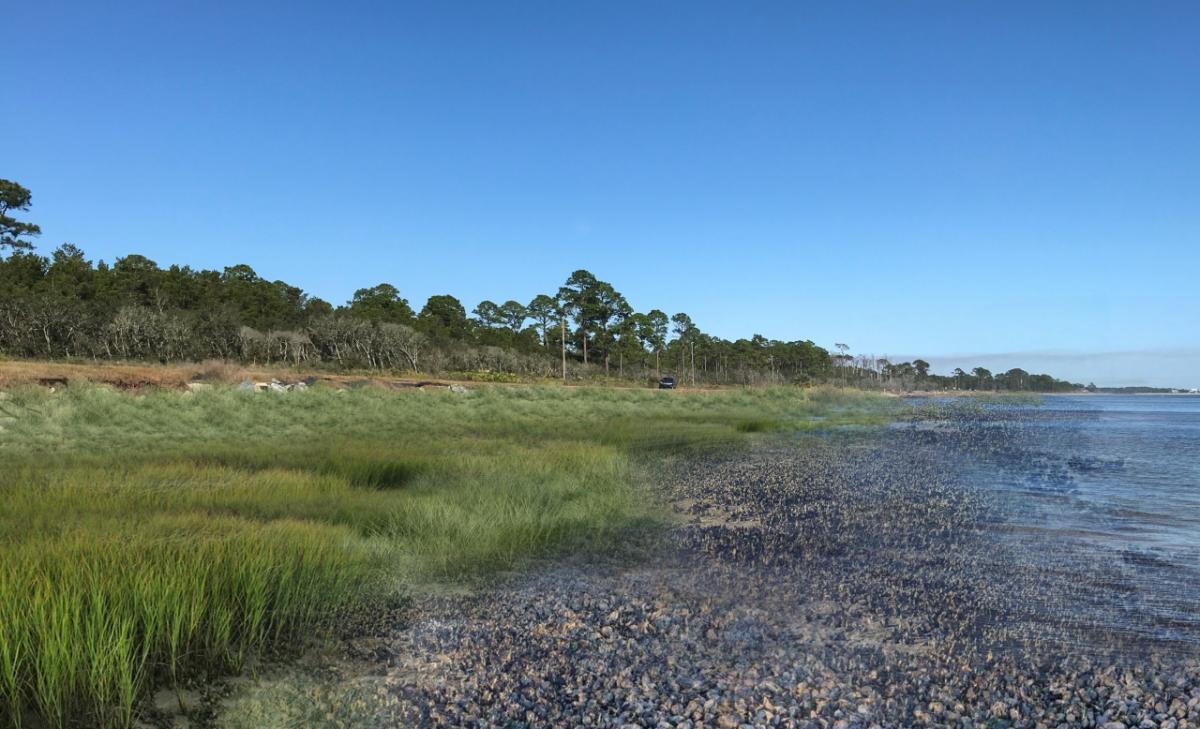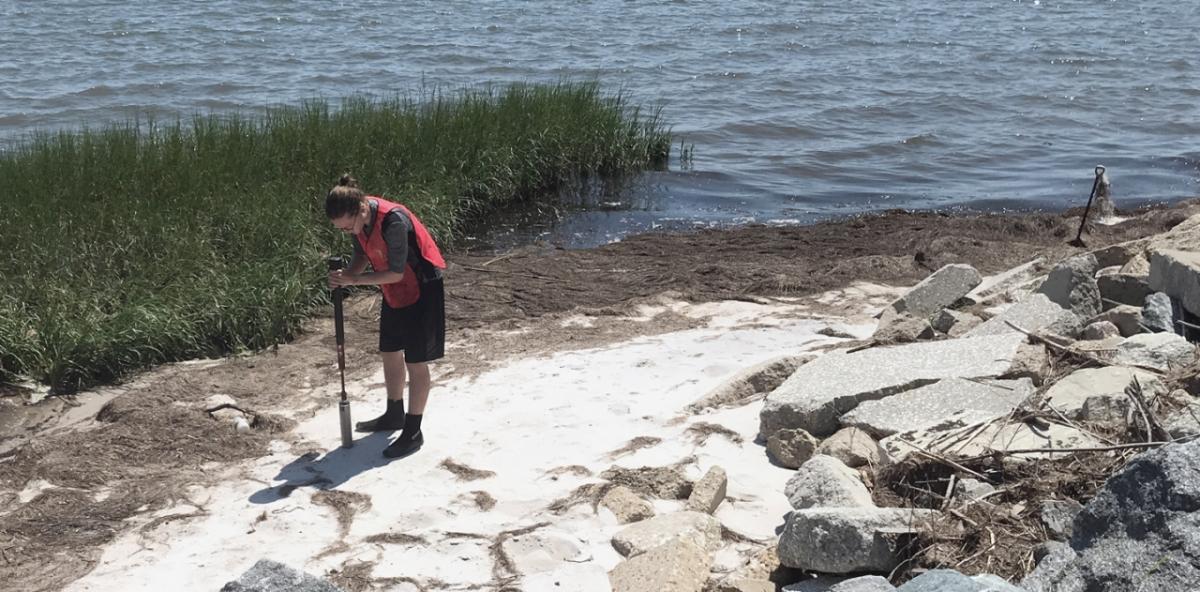Shoreline Restoration: 'Protecting Community, Conserving the Coast'
UN Decade on Ecosystem Restoration supports nature-based solutions for coastal resilience, such as WSP USA’s Franklin-98 project to create oyster reefs, saltmarshes.
Note: This is the third article in a series on the United Nations Decade on Ecosystem Restoration. This article explores the potential of nature-based solutions in combating climate change.
Nature-based solutions involve the use of natural habitats, like marsh grasses or oyster reefs, in place of – or to complement – traditional hardened structures, such as concrete seawalls.
This approach is increasingly valued not only for its effectiveness in coastal defense – wave attenuation, shoreline stabilization, floodwater storage – but also in providing the added natural benefits of water filtration, carbon sequestration and habitat enhancement for fish and wildlife.
As living elements of project designs, nature-based solutions are highly adaptable to changing environmental conditions that may occur as a result of climate change. As such, nature-based solutions are key components of coastal resilience, and often outperform their traditional hardened counterparts.
The public and private sectors alike are beginning to understand the potential of multi-benefit solutions like green infrastructure to combat the impacts of a changing climate. Further, growing demand for environmental, social and governance (ESG) investment has private clients taking a fresh look at how this approach can benefit their own land. Market pressure further encourages leveraging real estate assets into ESG assets.
This trend is a great win for the United Nation (UN) Decade on Ecosystem Restoration initiative, as more corporations value the benefits of investing in restoration to improve their ESG ratings.
The UN Decade on Ecosystem Restoration aims to massively scale up the restoration of degraded and destroyed ecosystems to fight the climate crisis from 2021-2030, targeting widespread engagement with governments, UN agencies, international non-government organizations, academia and large corporations. WSP USA is a key participant in the initiative.
Living Shorelines
State transportation departments often focus solely on traditional shoreline stabilization methods that involve hardened infrastructure, such as concrete and rocks. But now, more agencies recognize the untapped value of nature-based solutions to achieve their engineering goals.
WSP is currently working on a large-scale coastal restoration project in Apalachicola Bay, located in Franklin County, Florida. The Franklin-98 project will create 20 acres of oyster reefs and 30 acres of saltmarshes to repair areas of shoreline along Highway 98 damaged by erosion. The roadway is a critical piece of infrastructure connecting the region and serves as a designated hurricane evacuation route.
The feasibility study was completed Spring 2020, and WSP is currently working on the engineering and design plan, targeting completion by the fall. Construction will begin in January 2022 and is scheduled to conclude by January 2023.
The project will transform what is a heavily eroded shoreline vulnerable to storms into a stable, lush mosaic of habitats that provides important ecological enhancement to the bay and nearby communities.
Oysters and other filter feeders that colonize the reefs help to clean the water and serve as food sources for other marine organisms, while the marshes provide important habitat for birds, crabs, fish and other species. In turn, the ecological restoration supports the fisheries production, recreational opportunities and improved water quality.
Throughout the design process, WSP worked to avoid impacts to existing submerged seagrass communities within the project area. This required a mapping of the seagrasses and creation of safe buffers around every seagrass bed. To ensure the proposed reefs calm the waves enough to support the planted marshes, the team used three-dimensional coastal modeling to simulate the effects the reefs will have in attenuating wave energy.
Another critical component of the Franklin-98 project has been the need to obtain strong community support and written permission from each affected riparian landowner. Therefore, WSP is working closely witch the Apalachee Regional Planning Council to develop and implement a stakeholder engagement program featuring public workshop webinars, a social media campaign, and Franklin-98 branded T-shirts highlighting the project’s slogan: “Protecting community, conserving the coast.”
Dune Restoration
On sandy beaches where large waves frequently crash on the shore, sand movement is too strong to support oysters and marshes. For these high energy beaches, dune restoration is being used to establish natural habitats for shoreline stabilization.
These dynamic systems rely on coastal dune plants to trap sand and absorb storm wave energy. Restored dune systems not only provide enhanced storm protection, but also serve as important ecological habitats and recreation areas.
In one such case, WSP provided environmental and resilient design services to restore and stabilize 48,000 square feet of sand dune habitat at Wisconsin Point, a three-mile-long natural sand spit along Lake Superior – part of one of the longest freshwater sandbars in the world. It was a popular recreation area degraded by excessive foot traffic.
In addition to restoring pine barren forest dunes and wetland habitat, the design incorporates more than 1,000 feet of elevated boardwalks and viewing platforms installed over the dunes to support the coequal goals of the ecological protection, improved public access and preservation of historical sites.
Limitless Possibilities
Since flooding and erosion are major considerations for communities interested in enhancing resilience, any project adjacent to water should consider opportunities to use ecosystem restoration to reduce flooding/erosion risks.
Nature-based solutions can be used anywhere—public lands, federal lands, private development, corporate campuses—though funding is more readily available for publicly funded projects thanks to numerous available grants that value the use of nature-based solutions and the many natural benefits that they provide compared to traditional hardened infrastructure.
Some nature-based solutions, such as rain gardens and bioswales, can even be used in densely populated urban areas. Every location is different, but there is nearly always an opportunity to infuse green solutions in each situation.
Research and experience demonstrate that nature-based approaches often perform better than traditional designs in terms of coastal defense. Nature-based solutions help solve pressing issues while also offsetting critical losses elsewhere. These approaches provide many natural benefits that are currently diminished due to alarming rates of natural habitat loss within the United States and around the globe.
It is critical to also understand the bigger picture, in terms of long-term resilience, since the impacts of our projects have local, regional and global implications for biodiversity, public health and nourishment, economic activity and climate change.
Click here to read Part 1 of the UN Ecosystem Restoration series.
[To subscribe to Insights, contact the editorial staff at insights@wsp.com.]




